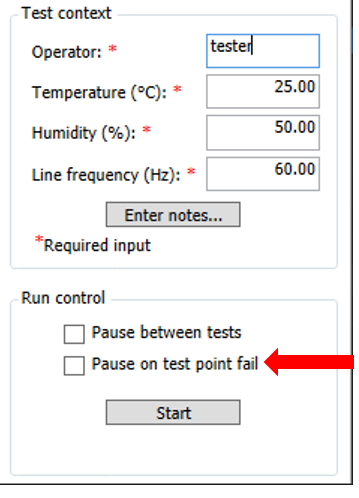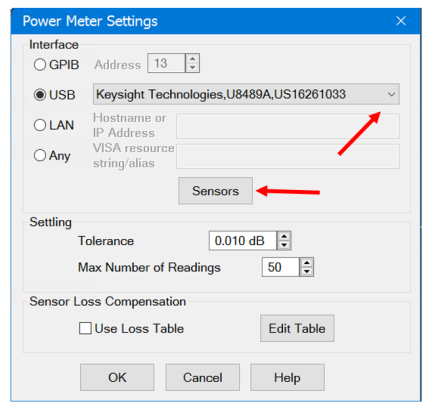
Review the General Troubleshooting recommendations before proceeding with this section.
Before running this test, certain settings must be set in TME and the PNA.
Be sure that Pause on test point fail is not selected for this test.

Enable power sensor setting when using USB power sensor.
From the PNA menu, go to: Instrument > Setup > External Hardware > Power Meter Setup …
From the Power Meter Settings dialog, select USB. From the drop-down list, find the connected USB sensor, then press Sensors.

In the Power Sensor Settings dialog, select Use this sensor only (no frequency checking)

Use a voltmeter to check the 28V rear panel output. This voltage should not deviate more than 0.5 volt from nominal.
Rerun the test. If the test continues to fail, perform the Noise Figure Adjustment.
Refer to the appropriate PNA-X service guide for specific troubleshooting suggestions and replacement procedures.
For the measurement part of this test (Normal Variant only), the PNA will control the power meter. Therefore the operator will need to switch the power meter's GPIB connection from the main bus to the PNA's controller. There are two different GPIB ports on the rear of the PNA: GPIB(0) CONTROLLER and GPIB(1) TALKER/LISTENER. It is important to make the correct connections to the appropriate GPIB port as detailed in the Receiver Noise Figure Performance Test.
To verify that the PNA is controlling the power meter, follow the steps below.
From the Power Sensor window, press OK.
If the GPIB and power sensor connections are correct, the test will proceed with the power measurement. If something is not correct, an error message such as Unable to recognize the power meter... will be displayed. Review the connection steps and make appropriate corrections.